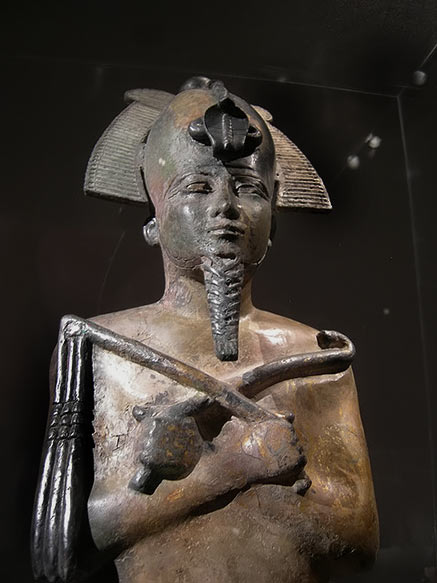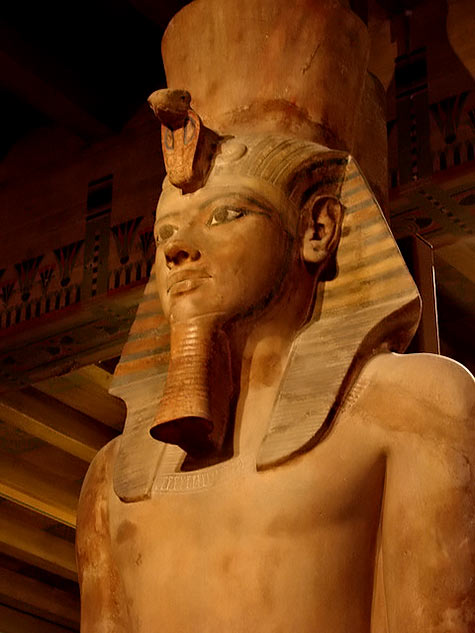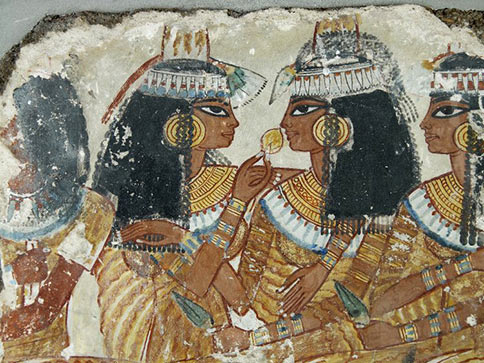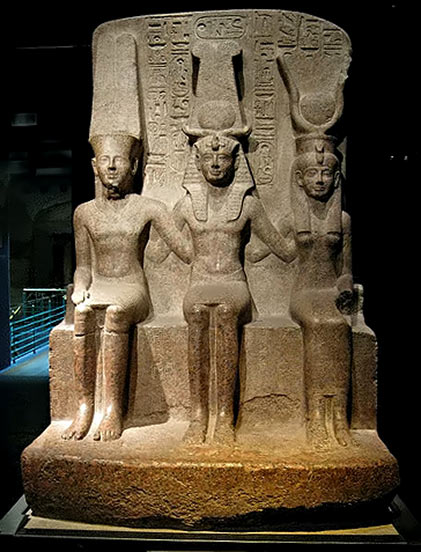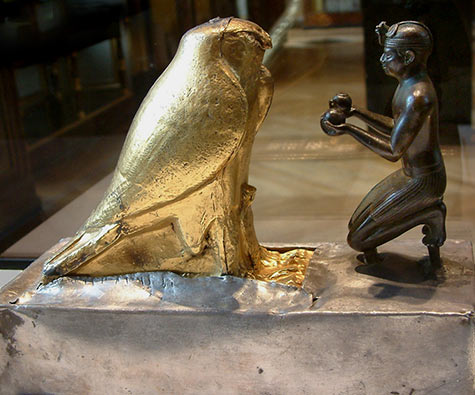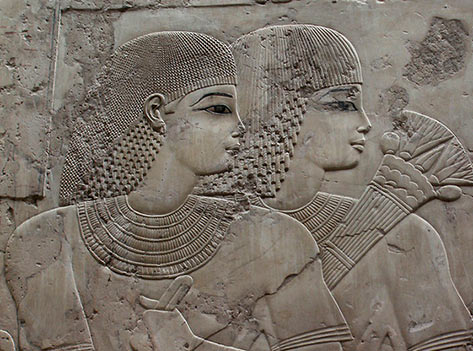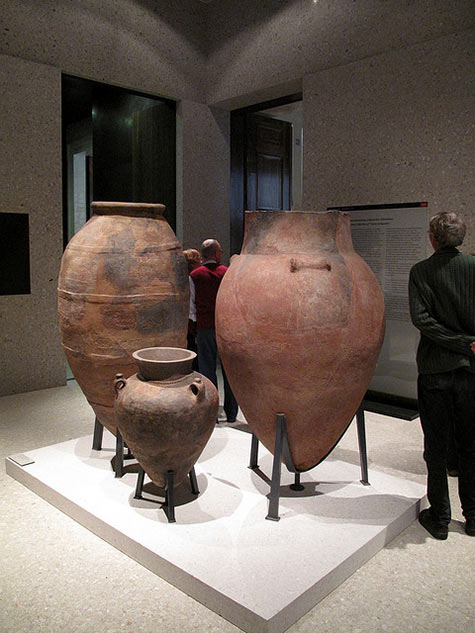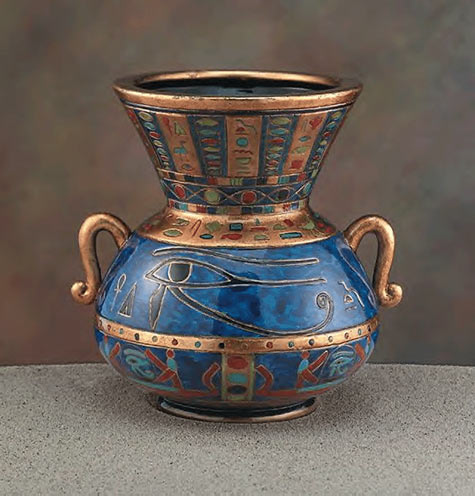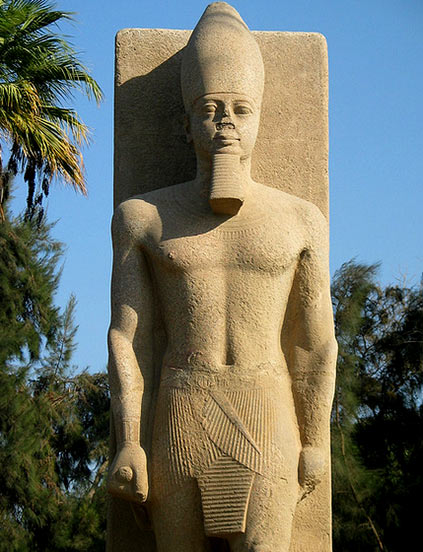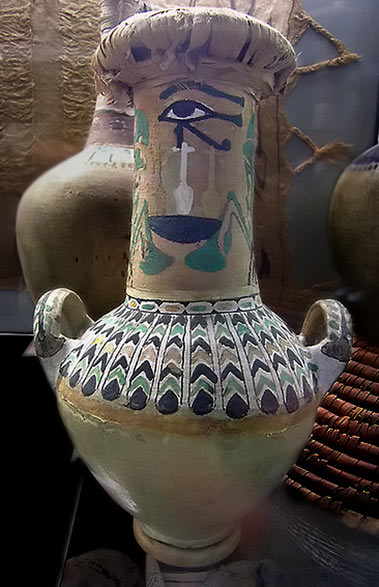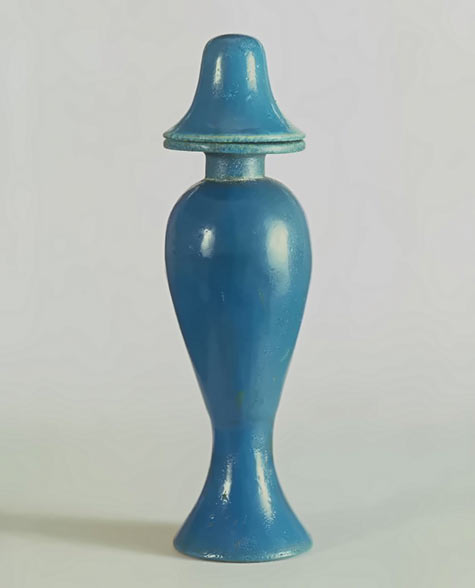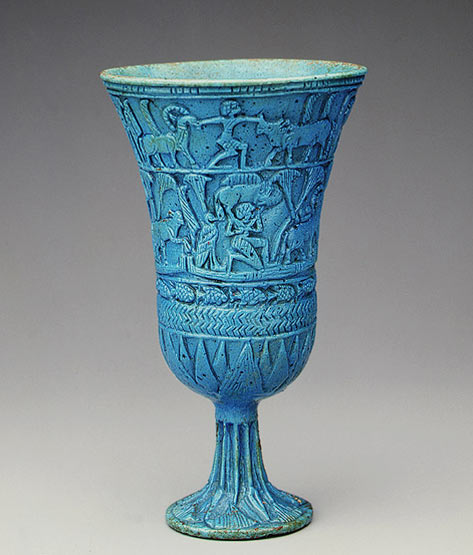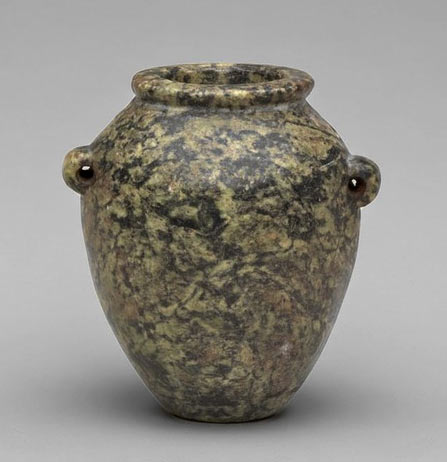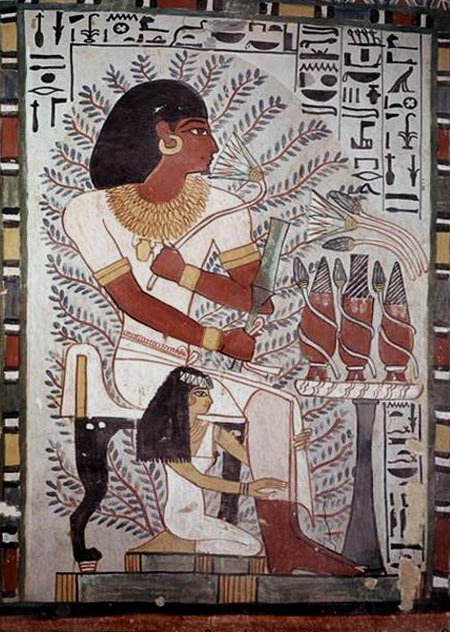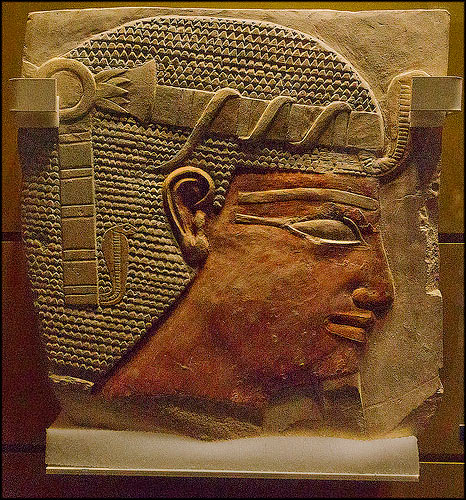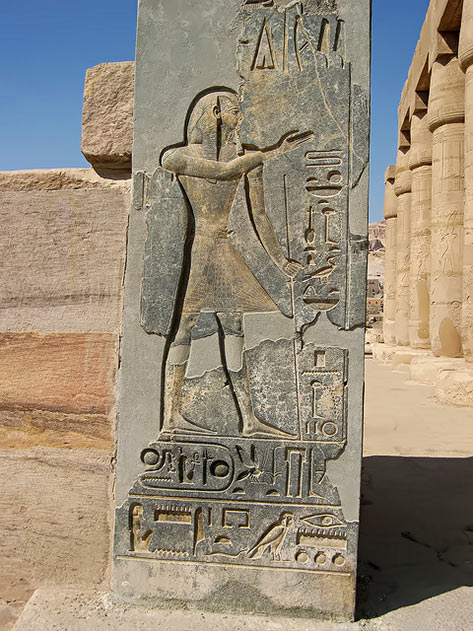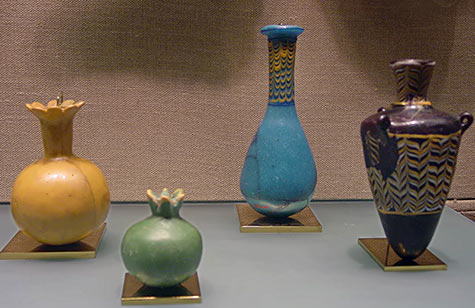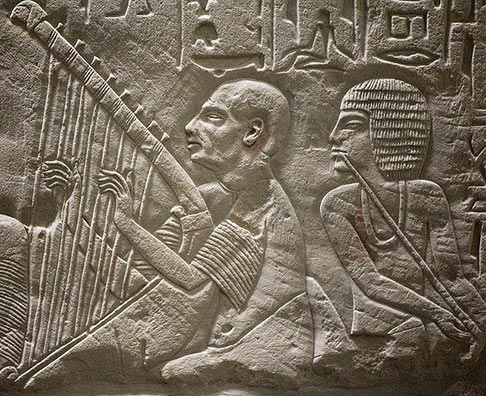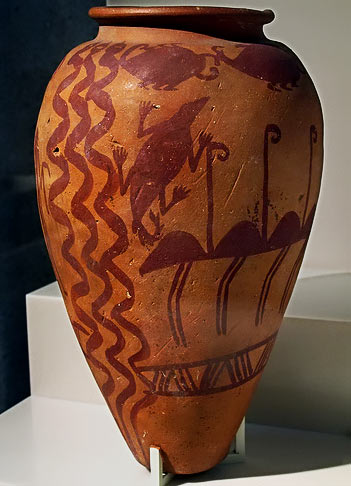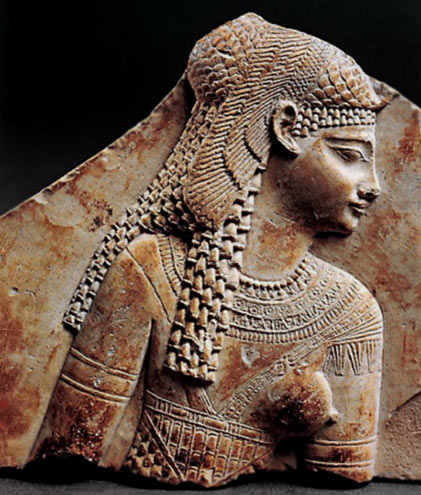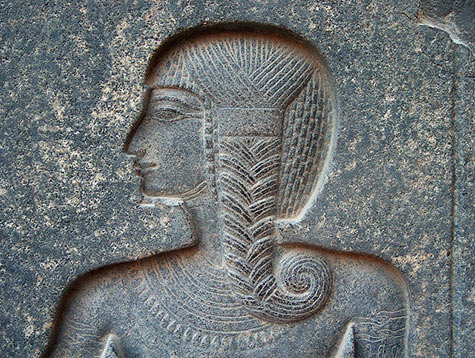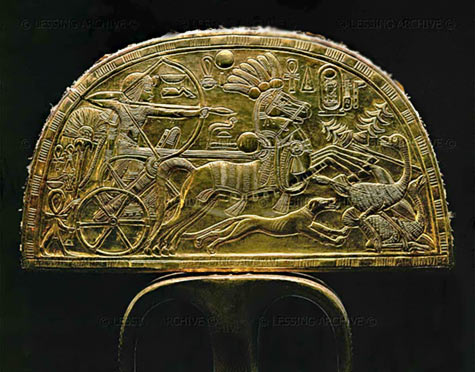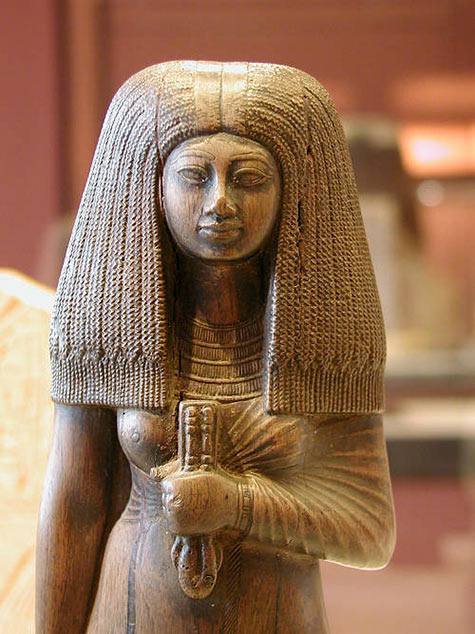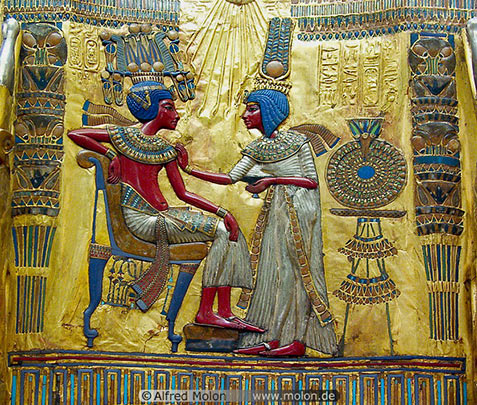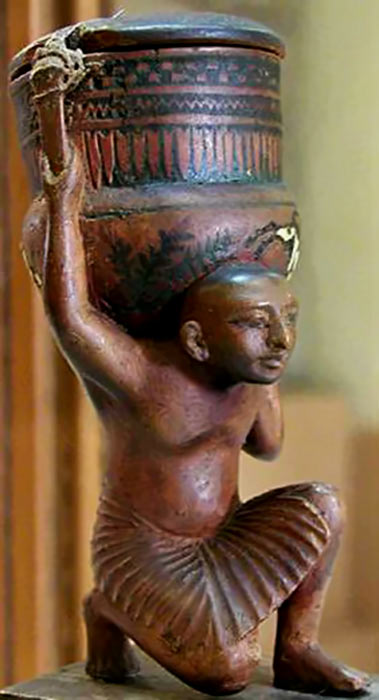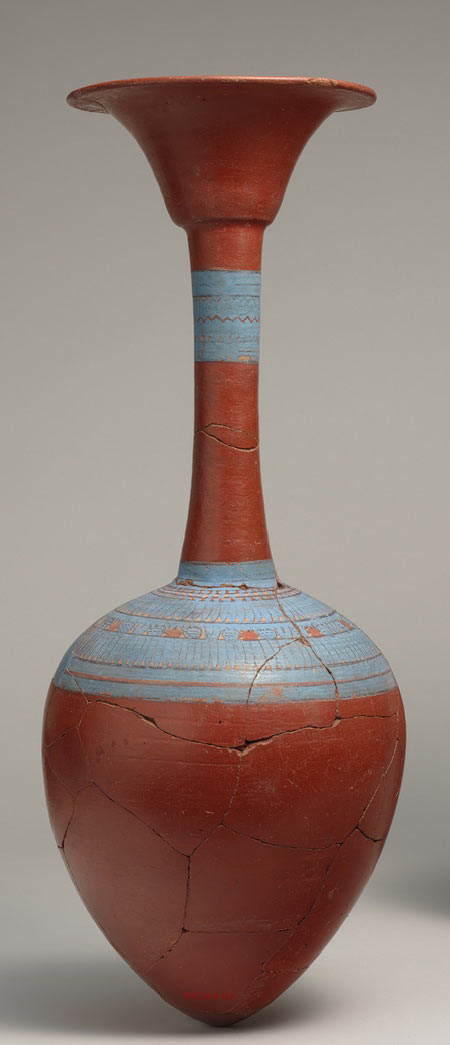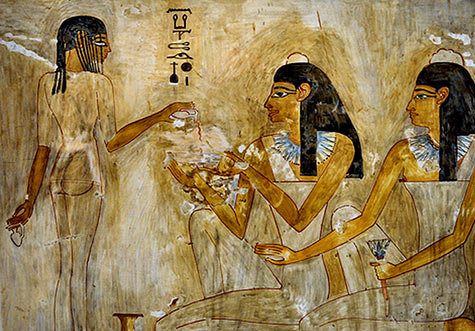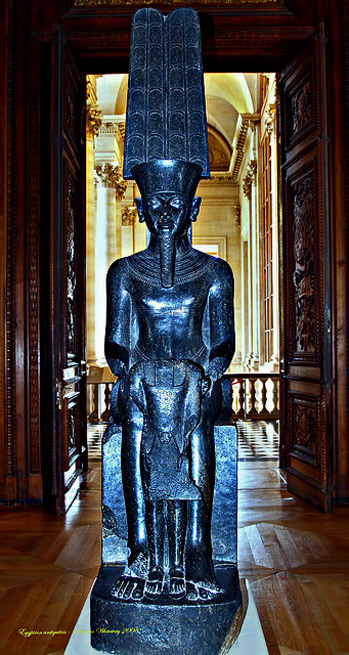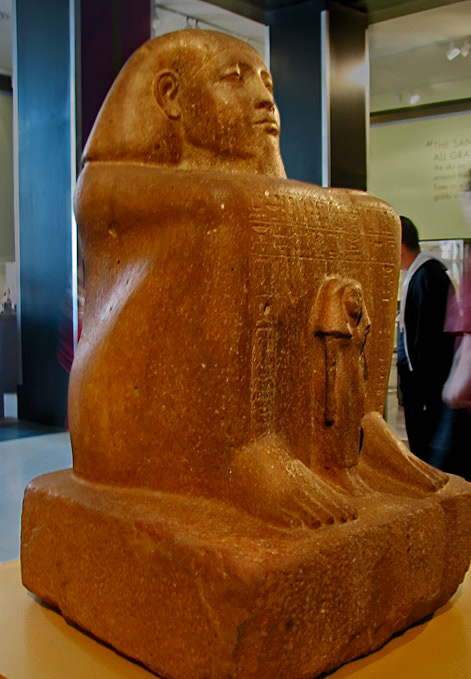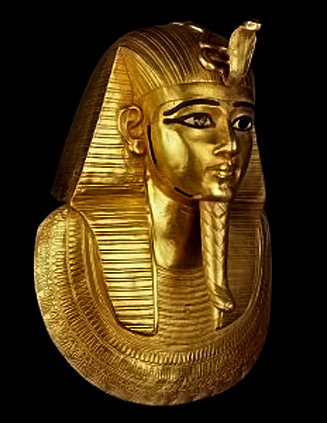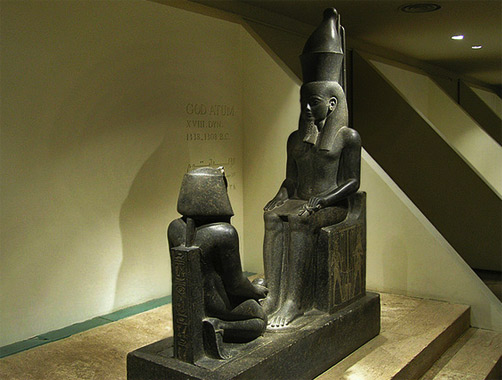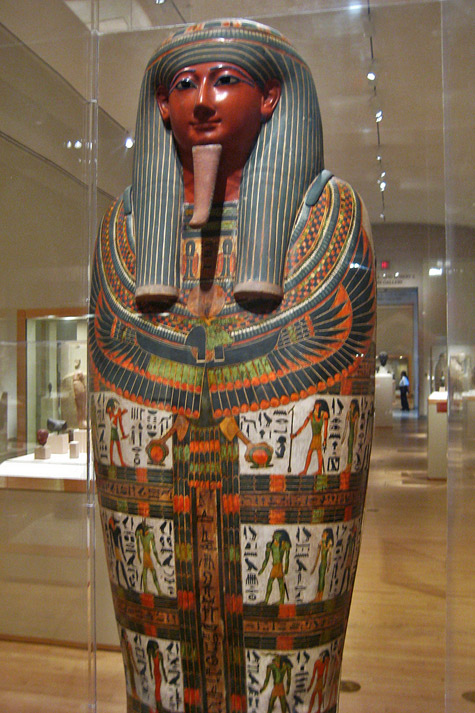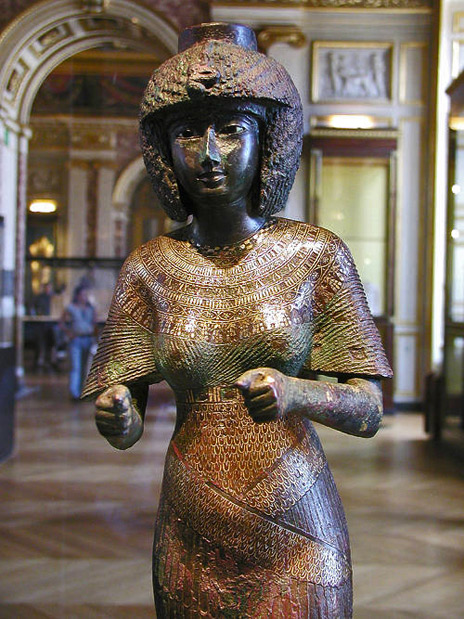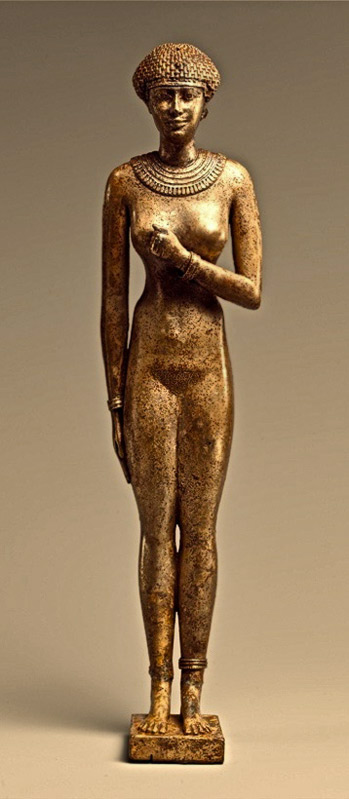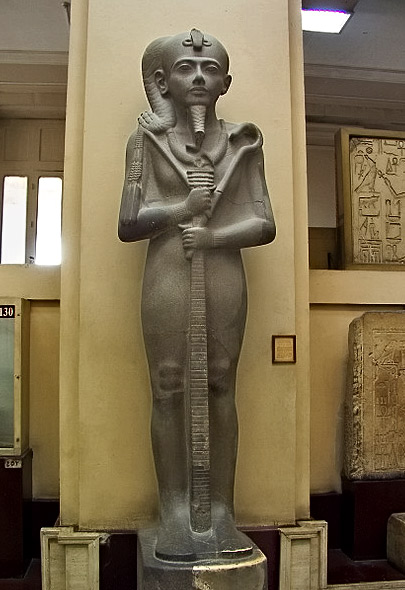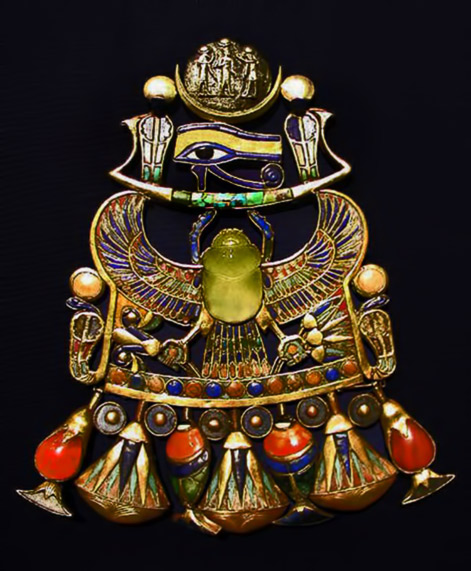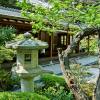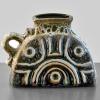Art and spirituality were deeply entwined in ancient Egypt. Religion was interwoven, not only into the Pharaohs power, but into life itself. It was the deity of a town who the people turned to, in order to prevent the everyday hazards of living. They used magic spells, charms, folklore and amulets to appeal to the deity for protection against hazards, and to intercede on their behalf, for anything from the Nile flooding, to sowing seeds and harvesting crops, to protection from poisonous snakes, and for safe childbirth. The temples were the focal point for ceremonies, offerings and art. The walls were usually covered in symbols, hieroglyphics and paintings, which documented their history, life and spiritual structures and beliefs.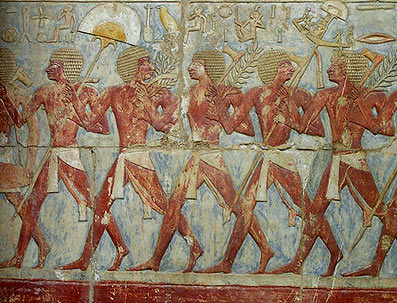
Keen observation and exact representation of actual life and nature, and strict conformity to a set of rules regarding representation of three dimensional forms dominated the character and style of the art of ancient Egypt. In order to clearly define the social hierarchy of a situation, figures were drawn to sizes based not on their distance from the painter’s point of view, but on relative importance. For instance, the Pharaoh would be drawn as the largest figure in a painting no matter where he was situated, and a greater God would be drawn larger than a lesser god.
The Ancient Egyptian art style known as Amarna Art was a style of art that was adopted in the Amarna Period (i.e. during and just after the reign of Akhenaten in the late Eighteenth Dynasty, and is noticeably different from more conventional Egyptian art styles.
It is characterized by a sense of movement and activity in images, with figures having raised heads, many figures overlapping and many scenes being crowded and busy. The most admired artists were those who replicated the stylized depictions of Egypt’s most venerated figures.
Egyptian statue – Met NY
( Flickr – brandonzwa )
Tutankhamun Colossus
Tomb chapel of Nebamun. A fragment of a polychrome wall painting. The fragments are keenly observed vignettes of Nebamun and his family enjoying both work and play.
( British Museum )
King Ramses II (1279-1213 BC) with the God Amun and Mut God, red granite temple of Amun at Thebes.
( Egyptian Museum, Turin )
King Taharqa (reigned ca. 688-ca. 663 B.C.) was a Nubian Pharaoh of Egypt. He was the last ruler of the Twenty-fifth Dynasty, the so-called Ethiopian Dynasty, and was driven out of Lower Egypt by the Assyrian’s as they began to conquer Egypt.
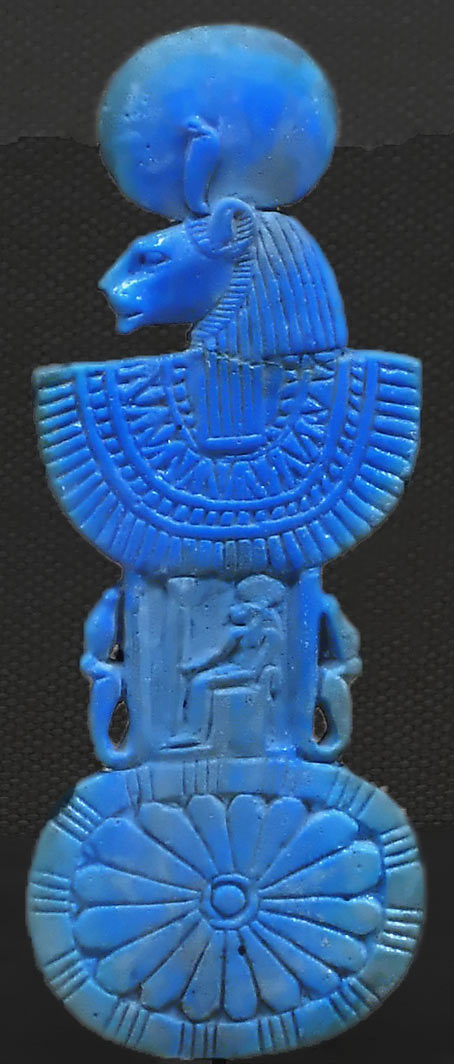 Egyptian Necklace counterpoise with aegis, of Sakhmet Period: New Kingdom, Ramesside Dynasty: Dynasty 19–20 Date: ca. 1295–1070 B.C
Egyptian Necklace counterpoise with aegis, of Sakhmet Period: New Kingdom, Ramesside Dynasty: Dynasty 19–20 Date: ca. 1295–1070 B.C
Exquisite wall carving in the tomb of Ramose. Pharaoh Akhenaten’s first minister, located on Luxor’s West bank – 18th Dynasty
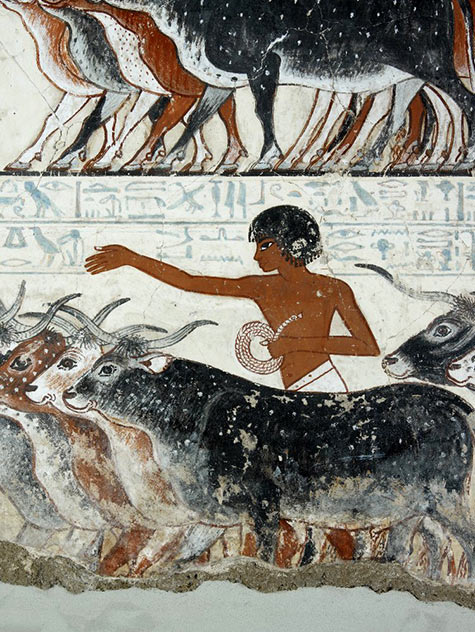
Painting from the tomb chapel of Nebamun
( British Museum )
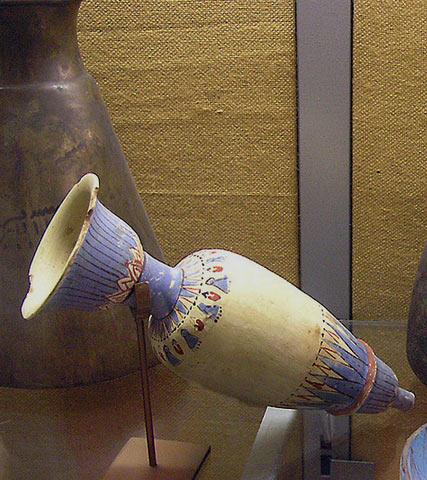
Two-handled pottery storage jar from the Tomb of Kha
( Egyptian Museum, Turin )
Large Egyptian storage pots
Neues Museum Berlin
Eye of Horus ceramic vase, gold and blue
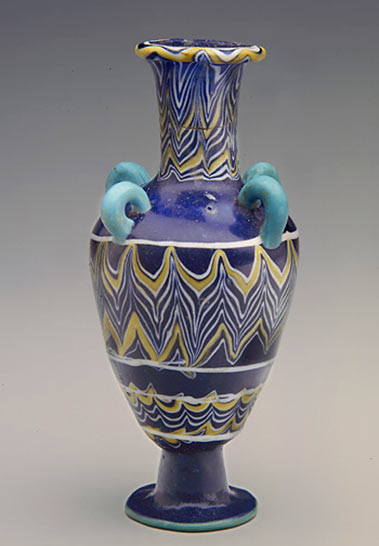
This is a superb example of a core-formed glass vessel, a method of producing glass vessels introduced to Egypt from neighbouring Syria early in the New Kingdom (ca. 1539–1075 B.C.E.).
These small vessels were fashioned as containers for costly perfumed ointments, scented oils, and cosmetics.
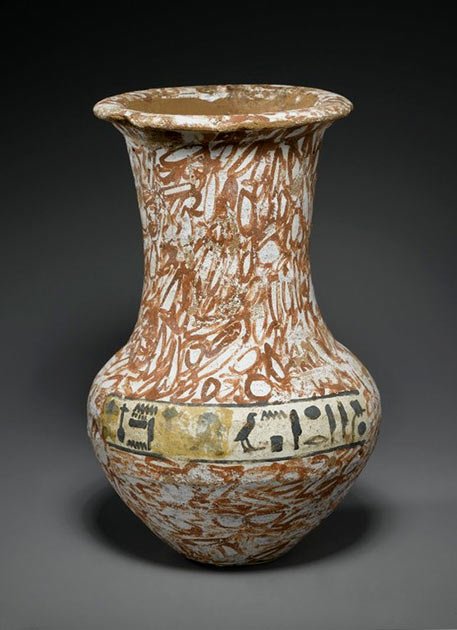
Funerary Vessel of the Wab-priest of Amon, Nefer-her, painted to imitate granite stone.
Thebes, Egypt ca. 1479-1279 B.C.E ( Brooklyn Museum NY )
Ramses II, Memphis, Egypt
( Elly’s – Flickr )
Two-handled pottery storage jar from the Tomb of Kha
The body is painted with rishi (feather) decoration, the linen-covered neck with religious symbols: a white nefer-sign, a black neb-sign and a black and white painted wedjat-eye. It can be read as ” all good and healthy things “.
( Turin Museum )
Egyptian Hes Vase with cover
Thebes, Egypt. ca. 1350-1295 B.C.E. Late XVIII Dynasty
Ritual vessels known as hes-vases were commonly used in temple rituals of purification and in libations, or liquid offerings, which the priest poured to the gods. Their shape resembles the hieroglyph hes, which can mean “to favor” or “to praise.”
( Brooklyn Museum NY )
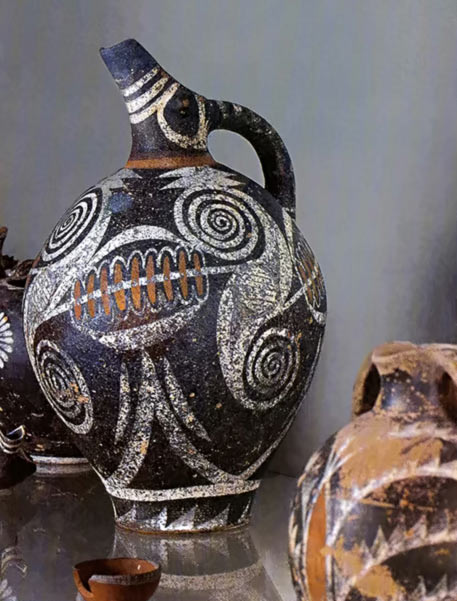
Kamares Ware beak spouted jug – Phaistos, Crete Middle Minoan II 2000-1700 BC.
The Mninoans actively traded with Egypt and had an influence on their arts.
Egyptian Faience Lotiform Cup, c.945–715 BC, 22nd Dynasty ( The Met )
This cup, made of brilliantly glazed Egyptian faience, imitates the slender form of the flower and is decorated in relief with scenes depicting the plant’s marshy habitat. Such cups were funerary offerings made to be placed in tombs.
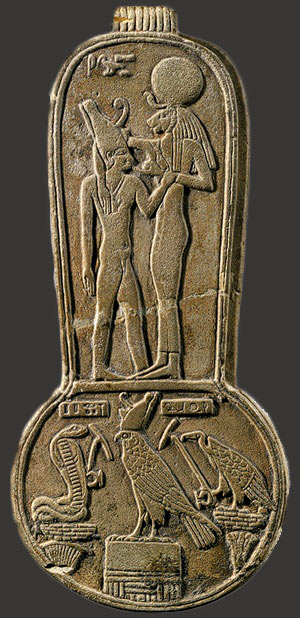
Menat of Taharqo
( The Met NY )
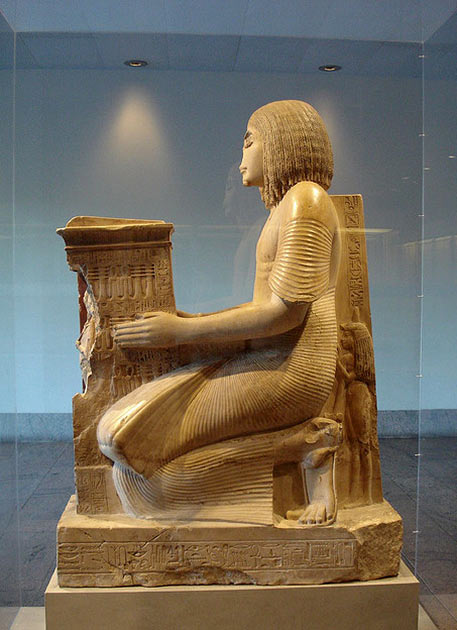
A high ranking official, doing his offerings wearing a fancy linen dress. ( Met Museum )
( Hans Ollermann – Flickr )
Egyptian Ovoid Vessel with Lug Handles
( Chicago Art Institute )
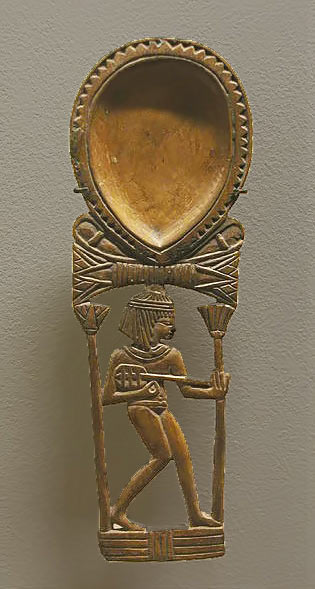
Egyptian spoon-18th Dynasty with a girl playing the Lute.
Egyptian wall painting – Sennefer seated with wife
Tomb Of Vines – Thebes , Egypt
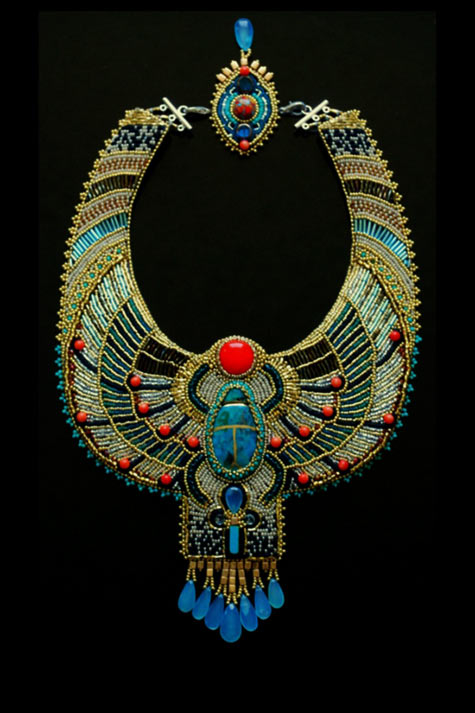
Bead Embroidered Egyptian Scarab Necklace
LuxVivensFashion – etsy
Egyptian Stone Carving, National Museum of Scotland by dun_deagh
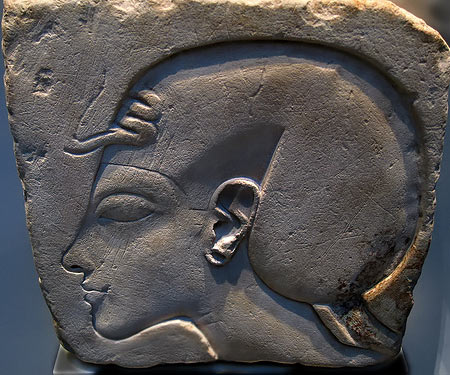
Wall fragment, Egypt
( byrnzie28 – flickr )
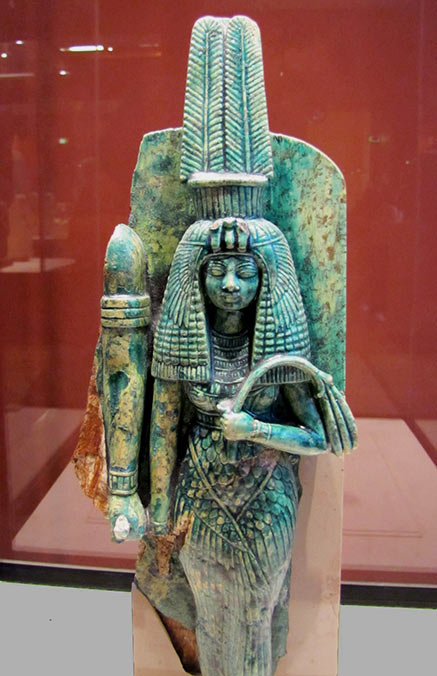
Egyptian sculpture Queen Ti
( Su55 – Flickr )
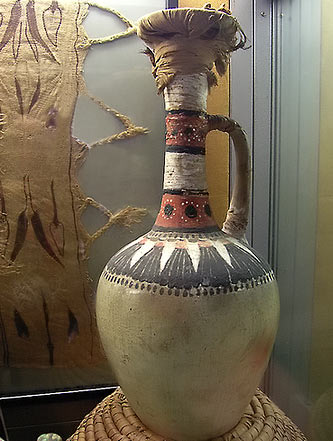
An Egyptian long-necked vases that were employed to aid against evaporation. From the Tomb of Kha, Deir el-Medina, Dynasty XVIII.
( Turin Egyptian Museum )
Su55 flickr
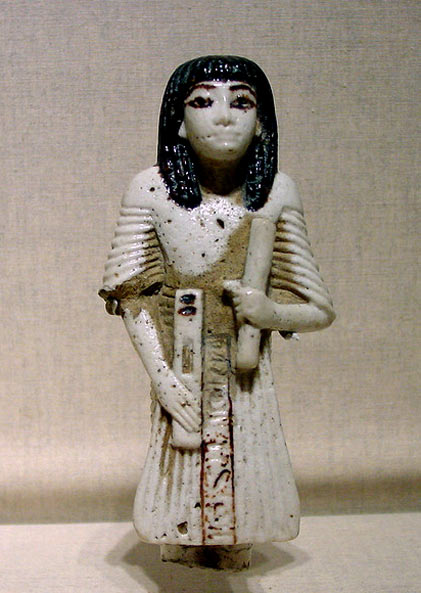
Statuette of Hori in the Brooklyn Museum
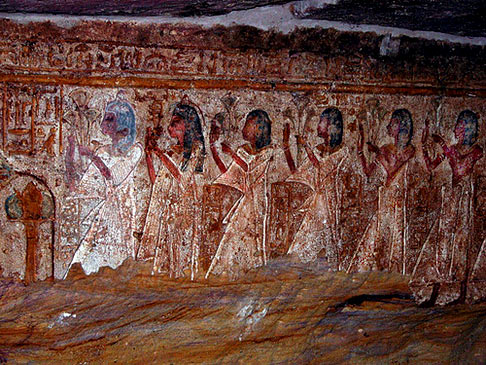
Tomb of Pennut. Lake Nasser, Egypt
( Archer10 – Flickr )
Photo by Ramesseum
( Fotor.com )
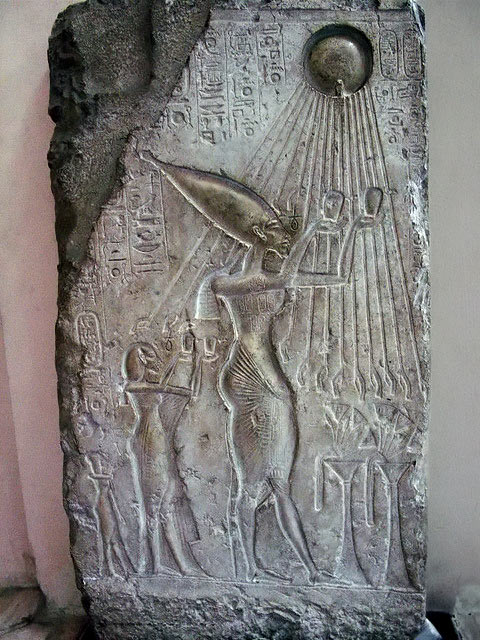
Akhenaten and Nefertiti
4 Egyptian vessels
( tutincommon – Flickr )
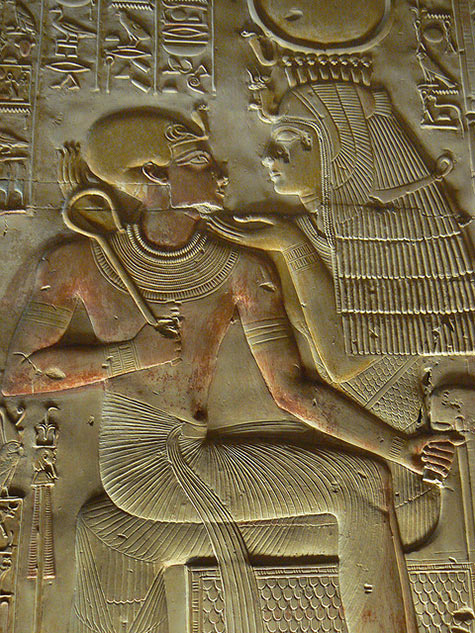
Ancient Egyptian goddess Isis with Pharaoh Seti – Wall of the Temple of Abydos in Egypt.
Egyptian wall art – blind harpist.
Limestone scene from the Tomb Chapel of Paätenemheb, Sakkara.
1333-1307 B.C.
Museum van Oudheden, Leiden
Gerzean decorated pottery (D-ware) c.3500 – 3200 BC – Height 28.5 cm
( Neues Museum Berlin )
Fragment of a relief of Cleopatra VII Thea Philopator (“Cleopatra the Father-Loving Goddess”).
Ramesses II as a child ( shown with the sidelock of youth )
( LouiseAl – Flickr )
Tutankhamun Fan–

Egyptian God Annubis
Museum of Antiquities in Cairo, Egypt
Tuya Tuya – 18th Dynasty, Louvre
Elaborately curled and adorned wigs were worn at special public occasions and at religious ceremonies.
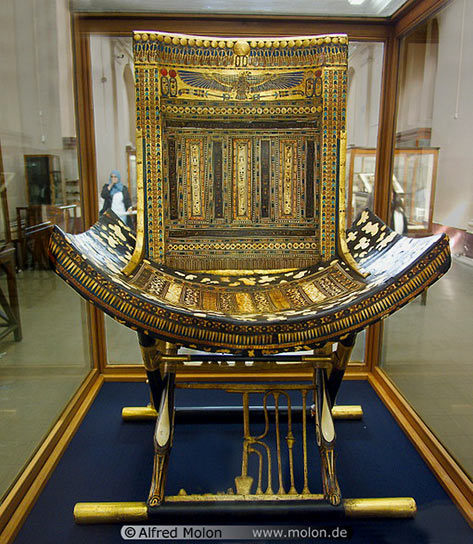
Inlaid Tutankhamun throne
Egyptian Museum, Cairo
Tutankhamen Anointed by His Wife
Detail from the back of Tutankhamen’s throne
Carved wood and gold, inlaid with Egyptian
faience, enamel, semiprecious stones and silver.
1355-1342 BC
From the tomb in the Valley of the Kings – Egyptian Museum, Cairo
Egyptian man with urn – 17th dynasty
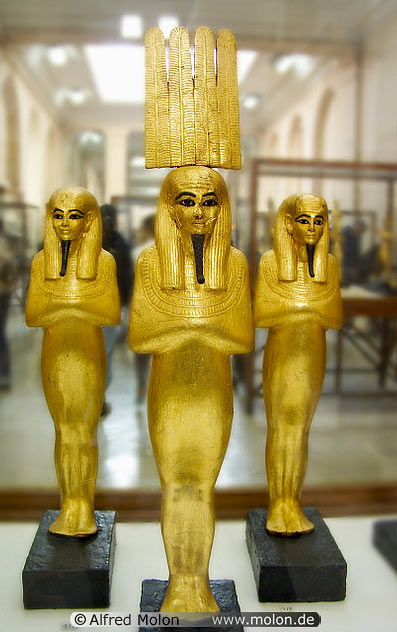
Golden statues of Egyptian Gods
( Egyptian Museum, Cairo )

Luxor temple
Water bottle from Tutankhamen’s embalming cache
( Met NY )
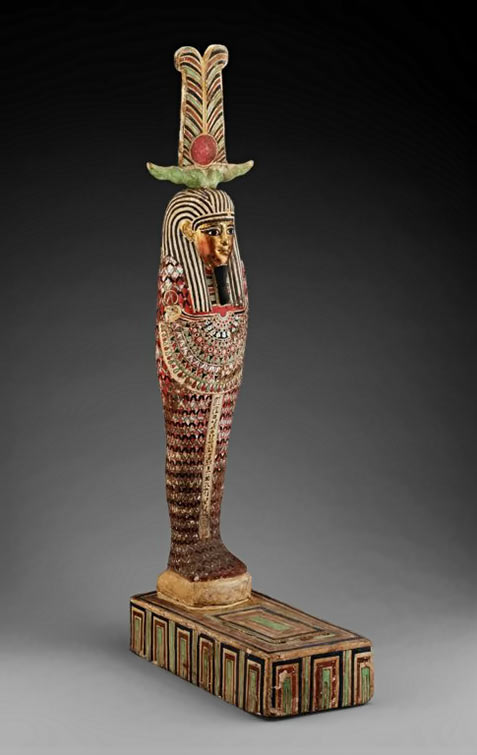
Egyptian Statue of Osiris
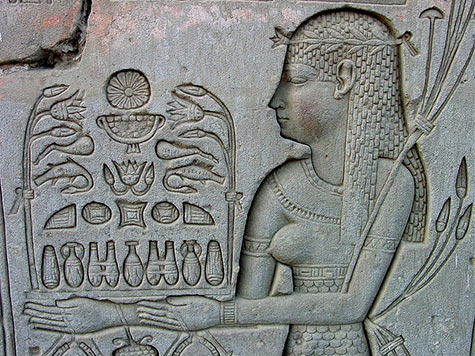
Wall relief – Egypt
Egyptian wall painting – New York Metropolitan Museum
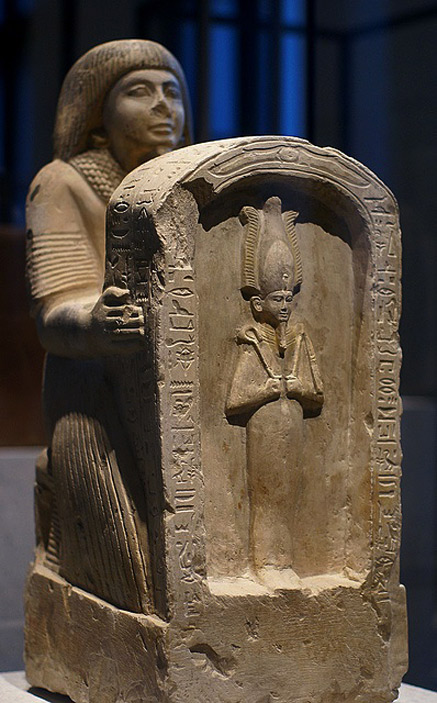
Setau viceroy of Pharaoh Ramses II stone relief
19th Dynasty,about 1260 BC
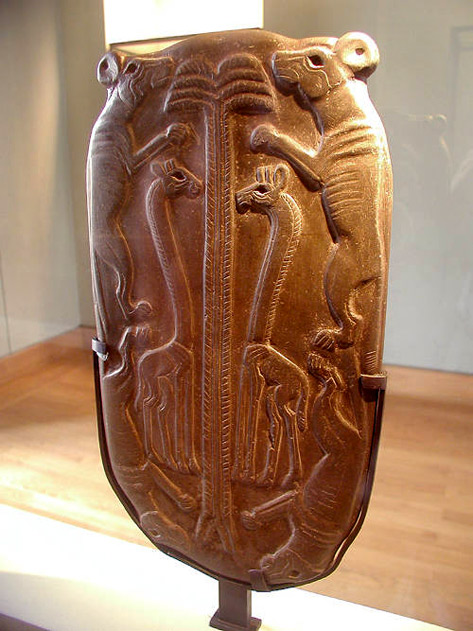
Mummy Case of Nespanetjerenpere
NYC – Brooklyn Museum
Wally Gobetz -flickr
The Amon god protects Tutânkhamon – 1336-1327 BC
Sandra Whiteway – Flickr
Block Statue of Senwosret-senebefny
Middle Kingdom, late XII Dynasty,(ca. 1836-1759 B.C.E.)
Brooklyn Museum
Photo © Joan Ann Lansberry
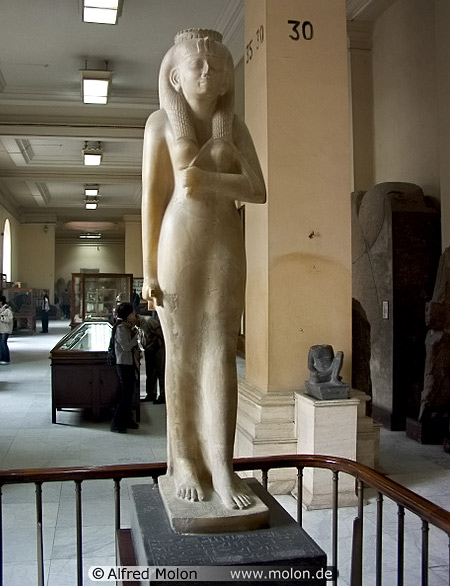
Statue of Amenirdis, daughter of Kashta, one of the queens of the 25th Nubian dynasty. She was a divine wife of Amon.
photo Alfred Molon
King of the pharaoh Psusennes Gold burial mask-Discovered in 1940 by Pierre Montet
Horemheb last king of Dynasty XVIII before Atum
Luxor West Bank Tombs, Upper Egypt
NYC – Brooklyn Museum – Mummy Case of Nespanetjerenpere
Cartonnage (linen or papyrus mixed with plaster), paint, glass and lapis lazuli on inlaid eyes and eyebrows.
Third Intermediate Period, Dynasty 22 to early Dynasty 25, circa 945–712 B.C.
Wally Gobetz -flickr
Karomama Meryetmut – 18th dynasty – Louvre Museum
The bronzw statue depicts Karomama with a short Nubian style wig. She wears an elaborate dress which is made to resemble wings encircling her body.
photo Jon Bodsworth
Bronze statuette of a Woman, Late Period, Dynasty 26, reign of Necho II, ca. 610–595 BC
Grey granite statue of the god Khonau, the child of the Theban Trinity, his parents being Amen-Re and Mut
photo – Alfred Molon
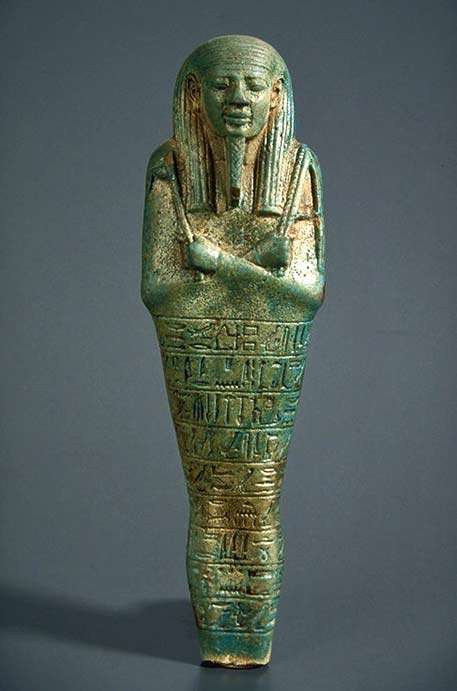
Funery Ushebti – XXVIth dynasty (Psammetic II) Egyptian earthenware
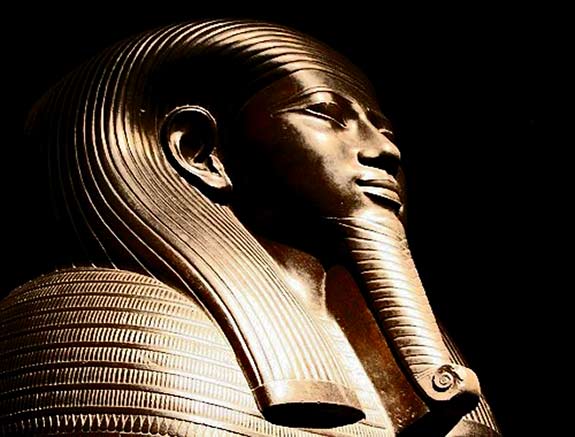
Pharaoh statue,. Torino Museum, Italy
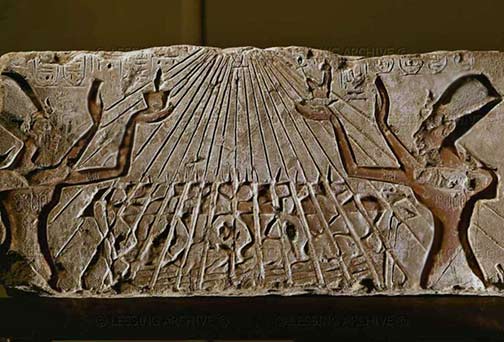
Wall Bas-relief from the Akhnaton temple project in Karnak
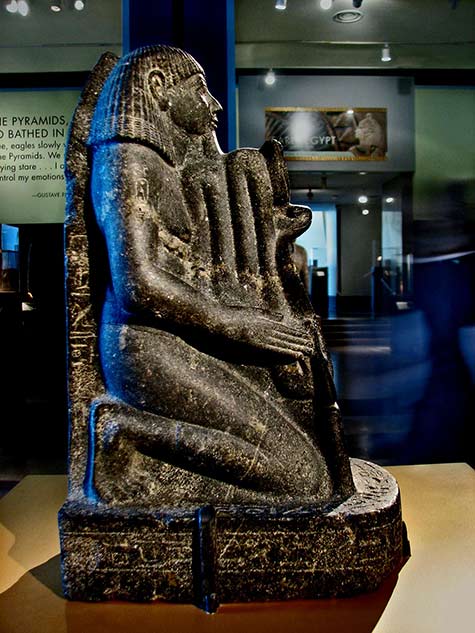
Kneeling Statue of Senenmut
Egyptian, New Kingdom, Dynasty 18
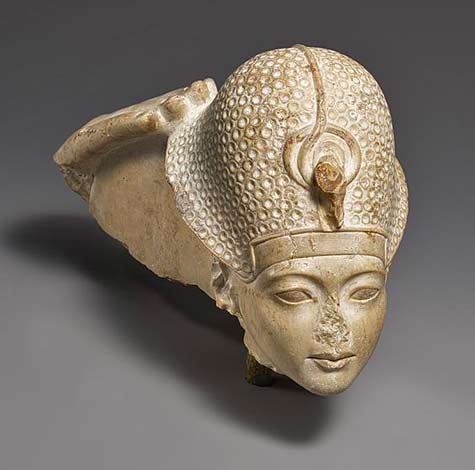
Head of Tutankhamun, New Kingdom, Dynasty 18,
ca. 1336–1327 B.C
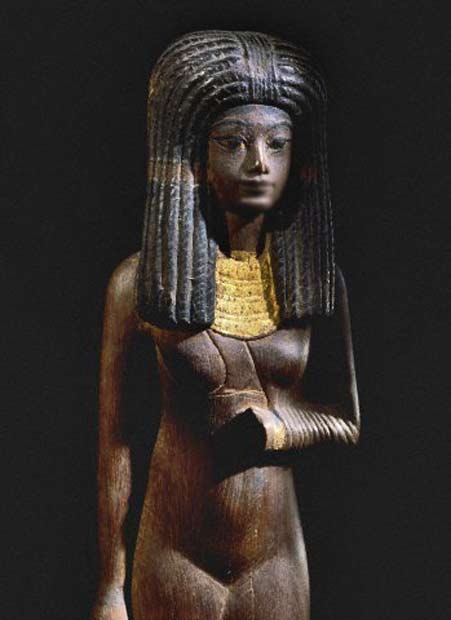
Statuette of the Lady Tiye
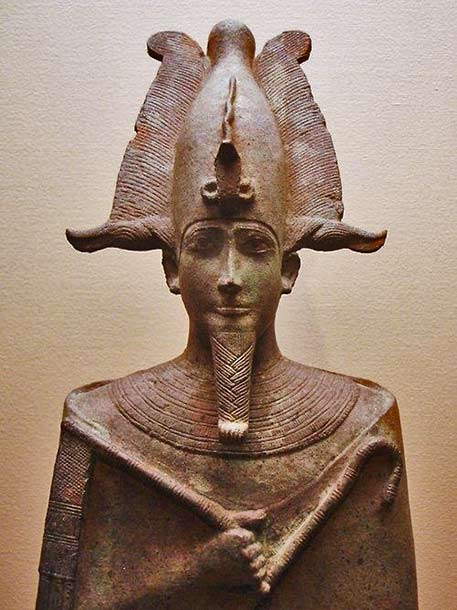
Ancient Egyptian statue of Osiris
Louvre, Paris
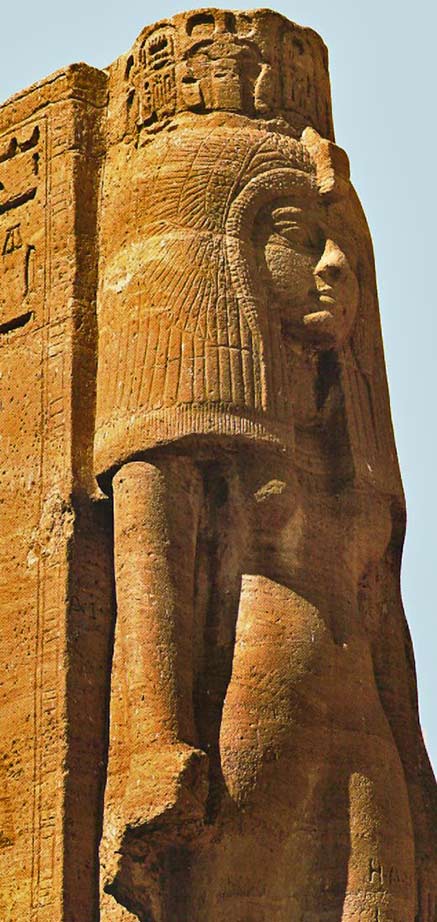
Abu Simbel – Ramses II Temple – Statue of Egyptian Queen Nefertari
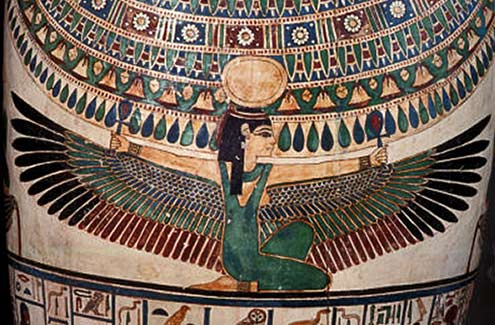
Sarcophagus – Limoges, municipal museum
Eye Of Horus pectoral
Tutankhamun pectoral with solar and lunar elements. Cloisonné with carnelian, lapis lazuli, calcite, obsidian and coloured glass.
The yellow stone in the center of the scarab is the “Desert Glass” of Egypt, fused silica gathered from the site of a meteoric impact in the desert.
More ancient Egyptian art HERE
;

